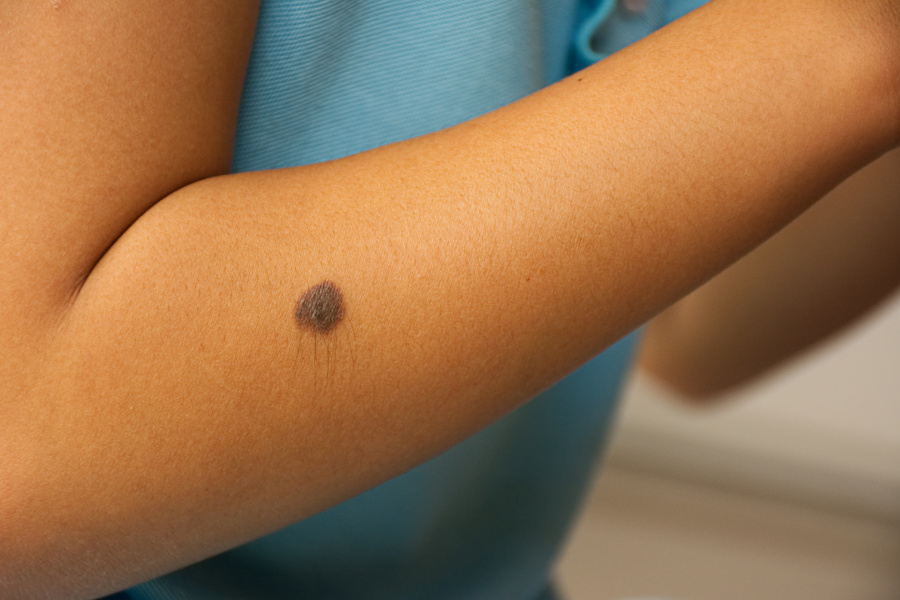
Moles are common skin growths that can appear anywhere on the body. Some people have only a few, while others may have many. Genetics play a role, so if your parents have moles, you are more likely to have them too.
Moles can vary in shape, size, and colour, ranging from small, flesh-toned bumps to darker spots on the skin.
They develop from melanocytes, the skin cells responsible for producing melanin, the pigment that gives skin its colour. When melanocytes grow in clusters instead of spreading evenly, a mole is formed.
Most moles are harmless and don’t pose any health risks. However, if a mole changes in size, shape, or colour, it’s important to seek advice from a medical professional. Regular self-checks and routine examinations by a doctor are the best ways to monitor moles and catch any potential issues early.
When checking your moles, the ABCDE rule can help identify potential signs of melanoma:
Regularly inspecting your moles using this method can help detect changes early and prompt timely medical advice.
In most cases, moles don’t need to be removed unless a doctor identifies them as suspicious or potentially harmful. Some people choose removal for cosmetic reasons, such as if a mole catches on clothing, hair, or jewellery.
It’s also common to feel uneasy about the appearance of a mole. Trusting your instincts is important—if having a mole removed gives you peace of mind, it can be a valid choice.

Melanoma is one of the most common cancers, and incidence rates are predicted to rise. This makes it crucial to be vigilant and monitor moles for early signs of skin cancer.
The first step is to see a doctor for a mole check. During the examination, your moles will be carefully inspected, and any suspicious ones may be examined using a dermatology microscope.
If a mole appears concerning, it may be removed for a histological analysis (£130 per specimen) to determine whether it is benign, precancerous, or malignant.
If a mole is confirmed as cancerous, the doctor may perform a wide local excision to remove additional surrounding tissue. This helps ensure that any remaining cancerous cells are eliminated and reduces the risk of the melanoma returning.
Attempting to remove moles at home is dangerous and strongly discouraged. The main risk is that you cannot be certain whether a mole is benign or malignant. Cutting into a cancerous mole can potentially spread harmful cells, increasing the risk of the cancer progressing.
Infection is another significant risk. Proper skin preparation and sterilised tools are essential for safe removal. Home procedures can lead to delayed healing, more noticeable scarring, or serious infections.
The most severe risk is sepsis, a life-threatening condition where an infection enters the bloodstream. If untreated, sepsis can lead to organ failure and can be fatal.
For safety, any mole removal should always be performed by a qualified medical professional.
Medical professionals use different techniques to remove moles, depending on factors such as the type of mole, its location, and considerations for scarring. Common methods include:
Each method is chosen based on safety, effectiveness, and the patient’s individual needs.
It’s important to seek medical advice if you have any concerns about your moles, especially if there’s a family history of melanoma. The earlier a suspicious mole is assessed or removed, the better the outcome.
You should consult a medical professional if a mole shows any of the following signs:
Never attempt to cut or remove a mole yourself—this should always be done by a trained medical professional.
Professional mole assessment and removal provide safe, effective care while minimising scarring and ensuring any suspicious tissue is properly examined.
